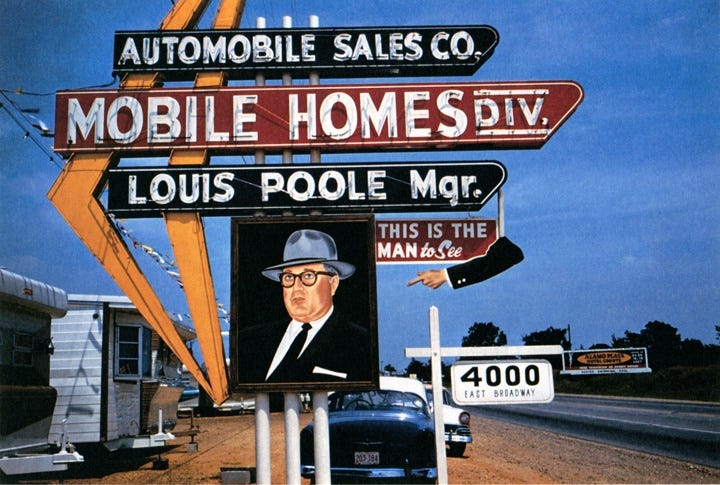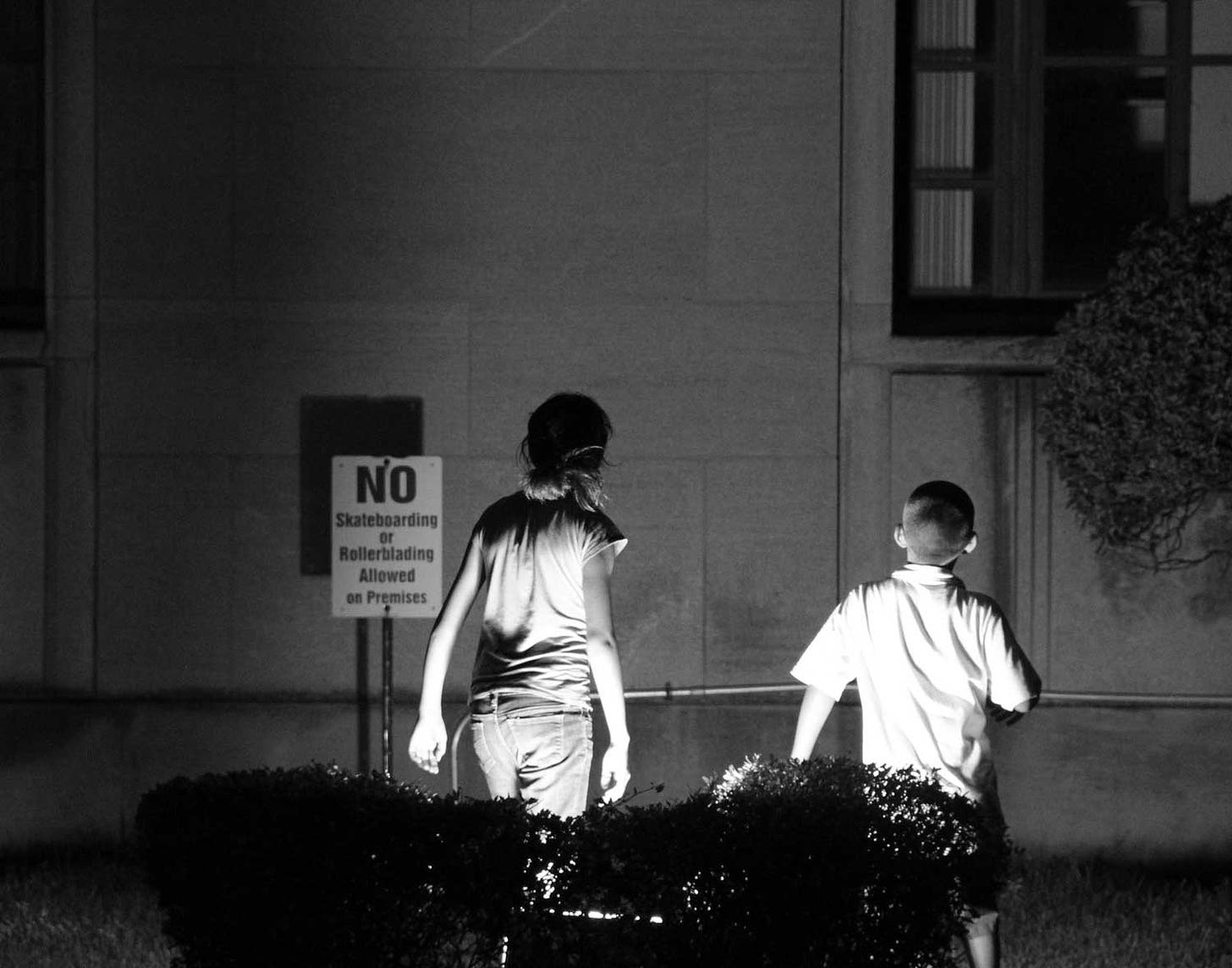July 4ths
7/4/1960
Inge Morath: "All day is dedicated to the drive through the amazing landscape of the Blue Ridge Mountains. It almost seems to be an accident that we are going on such a smooth road, things around are so untouched, trees and small wooden houses and the endless waves of blue hued mountain crests. There are still rhododendrons blossoming and marguerites and arnicas and flowers that look like windblown veils. The air smells of pines warmed by the sun."
[It was Moraths's first trip to America, on assignment for the shooting of The Misfits. (When you arrive first in a place, you can really see it, and the photos document this first glimpse at the culture of the American West, Vegas, etc)]. [More]
[Around Memphis, 1960. I suppose if you came from a place where the landscape wasn’t full of signage, you’d be taking photos of them. (When you first arrive in a place you can really see it).] Road signs made the US cool, and they are still cool—as rock'n’roll was cool. The US is a movie with that as its soundtrack, an idea that continues on to today as a Universal, regardless of how the US has changed politically. Pop culture is always a constant. 1960 was when pop art took off with Warhol and Ed Ruscha riffing on it.]
7/4/1998
Interesting that Springsteen's Born In The USA (1984) was misconstrued by most (including Lee Iacocca and Ronald Reagan) as some type of patriotic anthem, which it wasn't, but sounded that way. The lessons here are: 1) if you write a song that sounds like an anthem, that's how it will be perceived, regardless of what the lyrics say, and 2) most people don't listen to the lyrics anyway.
[In the process from idea to finished song, production will define how music is perceived, and the message can get lost in the sonic “manufacturing process”. If this song had a different producer and different musicians it would have been much different. I also realize that Springsteen, Mellencamp, Chrissie Hynde and even Sting (UK under Thatcher), created the “mirror” art for boomers in the 80s. I'd be interested in his views on how art and religion have had a synergistic relationship, and how they affect democracy, both positive and negative (not that there aren't lots of books about this, or podcasts, or YouTube channels. We can read too much into a songwriter’s intentions sometimes, but the public finds the story it wants].
7/4/2005
On Live 8: Why does music have to be a "mission"? Why can't spirituality speak for itself? (The power of music is to get people's emotions in a better state, and hopefully, that will impact the world in a positive way.)
[Same as above. Jimmy Carter was known as the “rock’n’roll president”, who bridged ideas of the spiritual with pop music as a way for social change. When will these ideas return to future generations? In fact, it is a mission, something that has gotten lost in the shuffle].
7/4/2011
Trespass (Rules Don’t Matter)
7/4/2022
Highland Park massacre. The horror. It's not even suitable for a scene in a film. Everyone cringes at the idea of something like this happening on the Fourth of July.
7/4/2023
The reason why most of us don't really understand cultural history is because we typically drop out by age 30. My parents probably dropped out by 1950, which is the reason why rock 'n' roll seemed so alien and shocking.
[I think we should stay culturally aware of pop culture until age 50, so as to narrow generational gaps. Younger generations have narrowed it through nostalgia, even if they were times in which that didn’t live. What young people are doing with music documentaries on YouTube is an example. It begs the question whether boomers would have been making videos about 30s and 40s music in the 1980s.]





